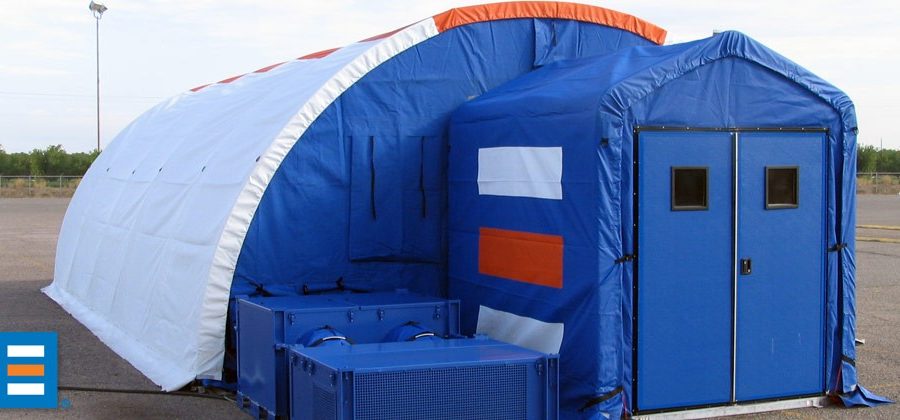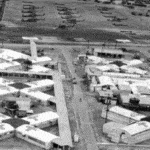Key Elements of Pandemic-Ready Healthcare Facilities
Every pandemic in history has been the same in two key ways: (1) each has caught humanity off guard and (2) quickly overrun the existing medical infrastructure. Time and again, this has left healthcare organizations, hospitals, clinics, emergency response teams, and all levels of government agencies scrambling.
The current COVID-19 pandemic is no exception. Healthcare organizations worldwide were unprepared for this global assault, and it showed. As America tries to recover from throws of another COVID surge, authorities of every stripe are looking to the future. Many are now realizing that they need to have the necessary facilities and equipment on-hand ahead of time.
Keep reading to learn what you can do and how best to prepare your facility or region for the next potential outbreak, disaster, or large-scale emergency.
Mobile Field Hospitals
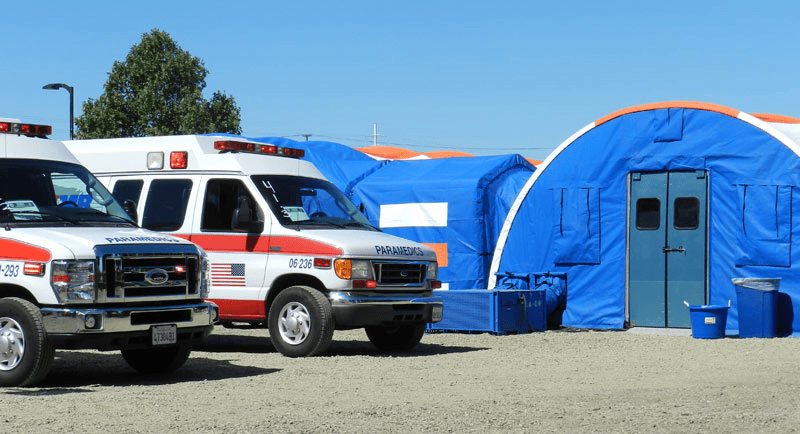
In a disaster or emergency situation, every second counts. The ability to position healthcare staff, equipment, and resources at the heart of an epidemic can make the difference between life and death.
It can also play a key role in preventing the spread of infection. When patients are forced to trek across town or even farther to access care, they can unwittingly expose hundreds of other people to infection. When they can get care nearby, this risk is cut down dramatically.
Mobile field hospitals allow governments and medical providers to deliver quality healthcare …when and where needed™. These mobile medical facilities are far superior to their brick-and-mortar and pop-up counterparts.
They can be erected at the heart of an infection and move with it. This ensures that resources are always deployed where they can do the most good. When they are not needed, these medical facilities can quickly be taken down and stored, preventing unnecessary costs and overruns with extensive construction schedules.
Moreover, dedicated field hospitals alleviate the burden during surge events on primary hospital facilities. They can reroute highly infectious patients out of mainstream facilities.
This keeps those facilities safer for staff and other patients. It can also reduce the loss of staff in mainstream facilities due to infection.
[Related: BLU-MED Medical Facilities and Mobile Field Hospitals vs. Expandable Hospital Containers]
Medical Surge Healthcare Facilities
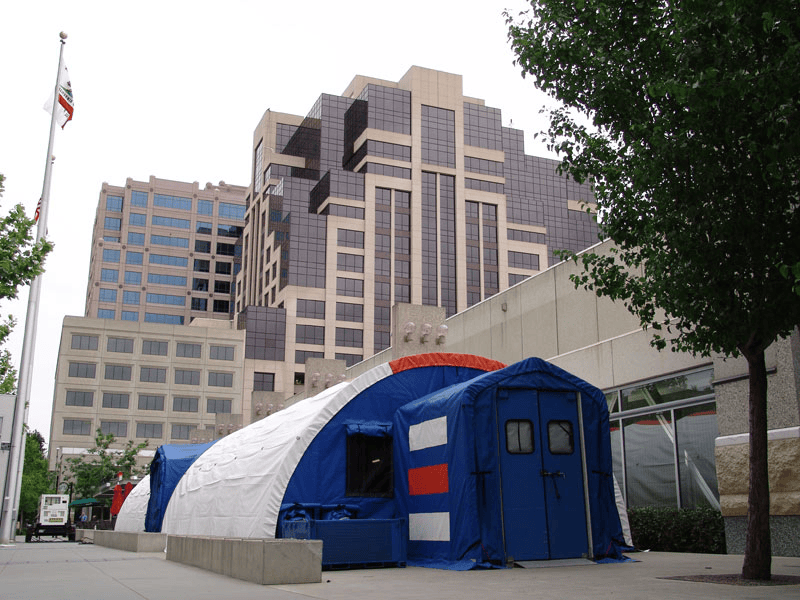
Like field hospitals, medical surge facilities:
- Create an instant increase in medical infrastructure.
- Reduce the burden on existing facilities.
- Make pre-existing facilities safer for noninfectious patients.
Quality surge facilities offer all of the comforts of mainstream facilities. For example, they can be equipped with temperature control systems and a wide selection of privacy curtains and partitions.
For infectious diseases, portable medical shelters and mobile field hospitals can be equipped with negative pressure isolation systems designed to:
- Meet or exceed CDC standards.
- Quarantine infectious patients.
- Reduce or prevent the spread of infection.
[Related: Guide to Creating Space for Medical Surge]
Negative Pressure Isolation Rooms
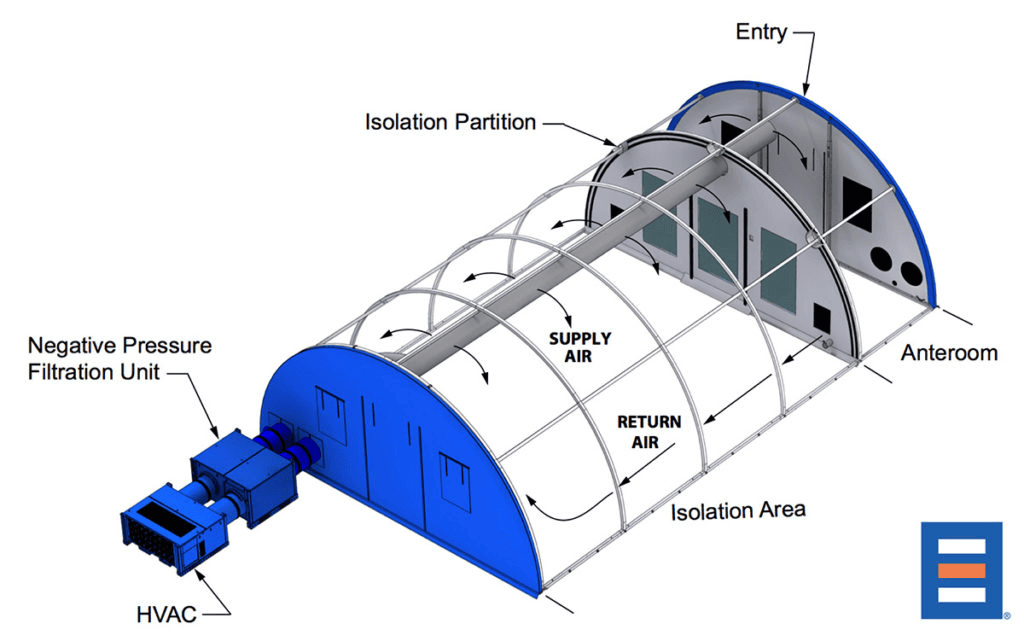
During an outbreak of respiratory illness, negative pressure rooms for isolation are mandatory to quarantine and treat infected patients.
The CDC requires the use of Negative Pressure Isolation Systems (NPIS) in every case in which patients have infectious airborne diseases including:
- Coronavirus (COVID-19)
- Severe Acute Respiratory Syndrome (SARS-CoV)
- Middle East Respiratory Syndrome (MERS-CoV)
- Influenza (Flu)
- Ebola
NPISs are also mandatory whenever patients are treated in the aftermath of a bio-terrorist attack. Most hospitals do not have adequate NPIS to handle an outbreak. Pop-up NPIS facilities are the ideal answer.
[Related: Airborne Diseases: An Overview]
Deployable Morgue Systems
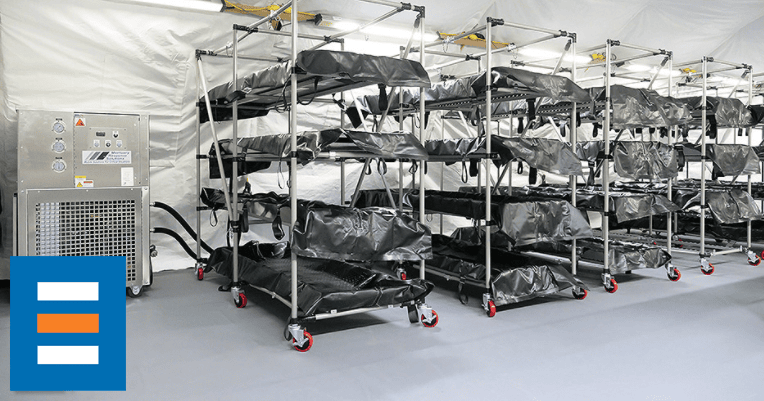
Mobile morgues were playing an essential role in the COVID-19 pandemic. Major cities like New York relied on them to keep up with the pandemic death toll.
The need for these facilities stayed high for months. The surge in rising COVID cases may require the widespread use of mobile morgues again. In nations where these facilities were not available, corpses literally lined the streets.
In any pandemic, no matter how good the medical response, deaths will occur. Failure to prepare for this reality places governments, healthcare organizations, and disaster response agencies in an untenable position. Negative media coverage often makes things worse.
Deployable morgue systems offer patients and responders alike dignity, control, and protection.
[Related: The Importance of Deployable Morgues for Disaster Sites]
Antibody Infusion Centers
Antibody infusions, or the transfusion of COVID-19 antibodies into patients in order to prevent the disease from developing or spreading, are one of the newest tactics being used to fight the coronavirus pandemic.
Antibody infusion centers help in this effort by creating a dedicated facility outside of the main hospital building to prevent disease transmission and hospital surge.
[Related: Antibody Infusion Centers for COVID-19]
Safe Visiting Centers
Airborne disease outbreaks essentially turn assisted living and nursing homes into prisons for the elderly — leaving the home is too risky and would necessitate full quarantine upon return, and allowing loved ones into the homes to visit can also be problematic.
As a result, being able to deploy safe visiting centers can drastically improve quality of life for senior citizens during a pandemic.
For example, during the coronavirus pandemic, some nursing homes opted to set up COVID visiting centers outside of their main building. By designating separate entrances for residents and visitors and establishing social distancing and hygiene measures, the nursing homes could create a safe environment for visits.
Fabric Structures and Portable Hospital Beds
What do all of the above facilities and tools have in common?
- They are the future of pandemic and disaster response.
- They meet state and federal guidelines for emergency medical care provision.
- They involve high-quality fabric structures and portable hospital beds.
- They can be deployed rapidly in response to changing needs and new developments.
- They are suitable for every climate and environment.
- They are cost-effective and energy-efficient.
BLU-MED Response Systems® provides rapidly deployable medical facilities that meet the needs of medical and disaster relief organizations, hospitals and urgent care facilities, emergency management and first responders, as well as government agencies (of all levels). They provide safe and effective environments in which to give and receive advanced-level care, either temporarily, semi-permanently, or for extended durations (year-round).
They also provide governments with the tools they need to meet their responsibilities to their citizens. BLU-MED medical shelters and mobile field hospitals have been a key tool for creating safe testing and patient isolation and care facilities outside main hospital buildings.
[Related: Preparing for the Potential Return of COVID-19]
Make BLU-MED Medical Facilities Part of Your Plan
Make BLU-MED deployable medical facilities part of your plans. Learn more about how these structures are being used on our blog. Or contact us today for details and pricing.
